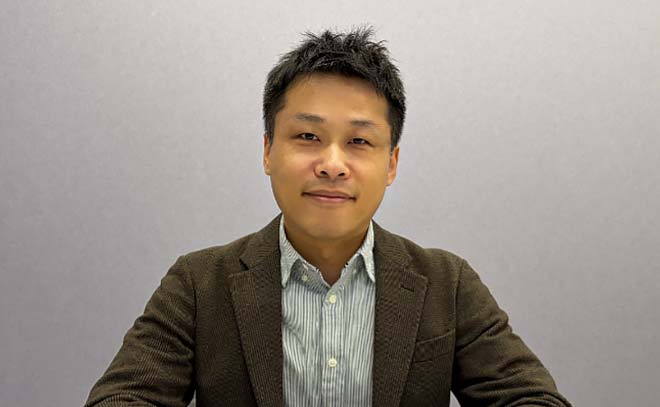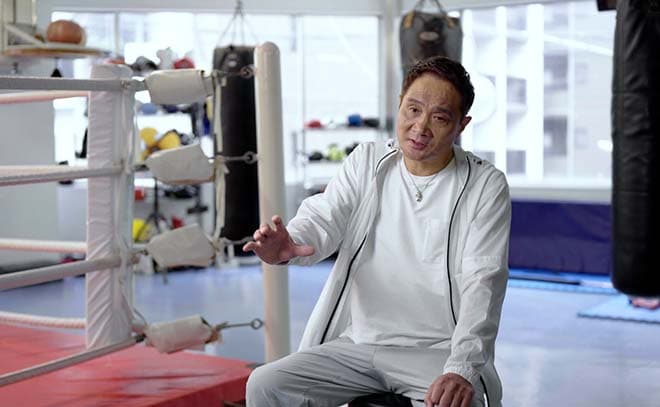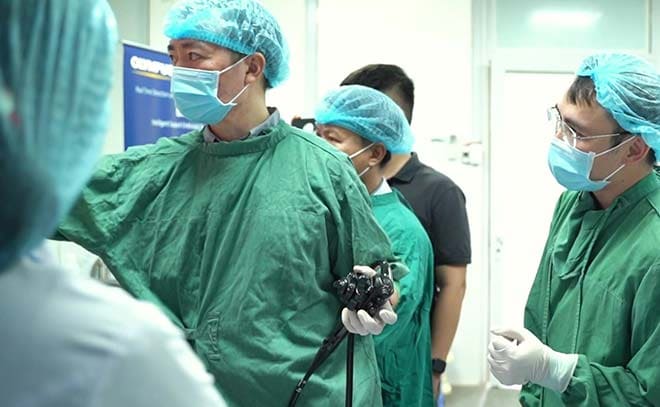Discovering the excellence of laparoscopy during a cholecystectomy: A lapacholotomy*1 experience
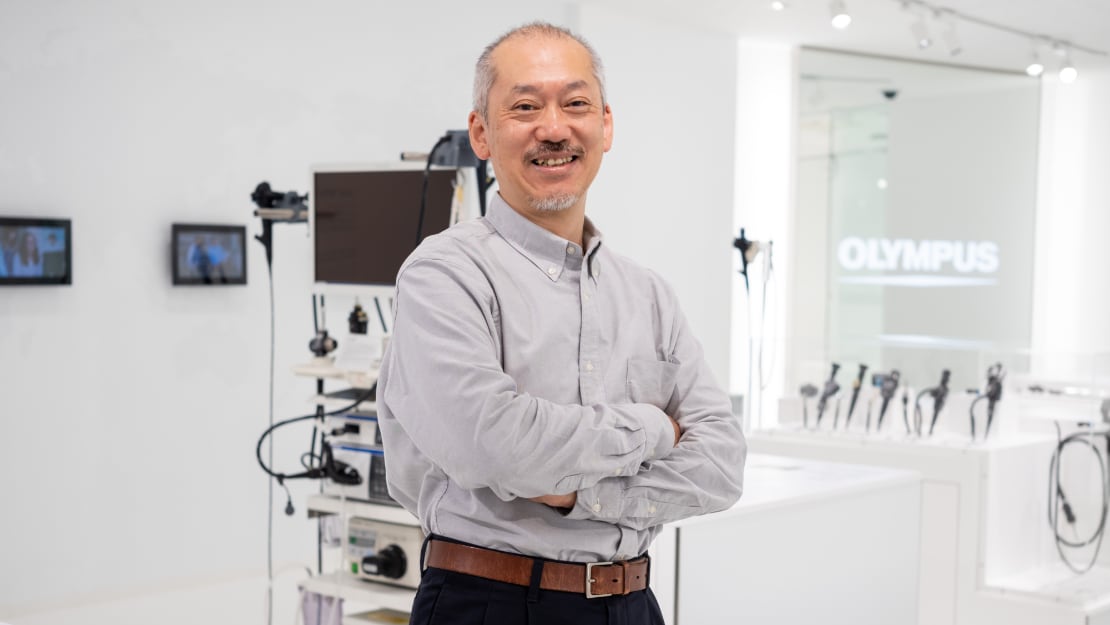
Hiroshi’s Story
In 2016, Hiroshi, a member of the HR Organization Human Resource Development Department at Olympus, was diagnosed with gallbladder stones and had to undergo a lapacholotomy (laparoscopic cholecystectomy) to remove his gallbladder. Thanks to the minimally invasive laparoscopic surgery, he was able to return to work five days after surgery and is now living a healthy life. We took a trip down memory lane to the period when he underwent surgery.
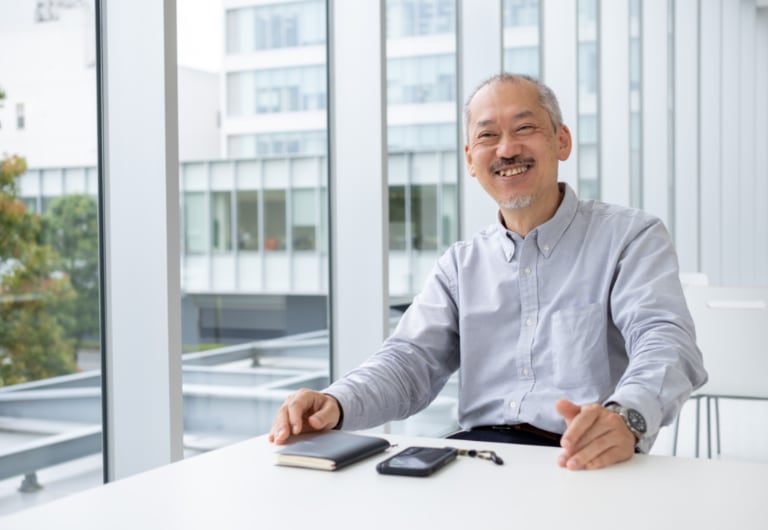
"Suspected gallstones" revealed by initial abdominal ultrasound
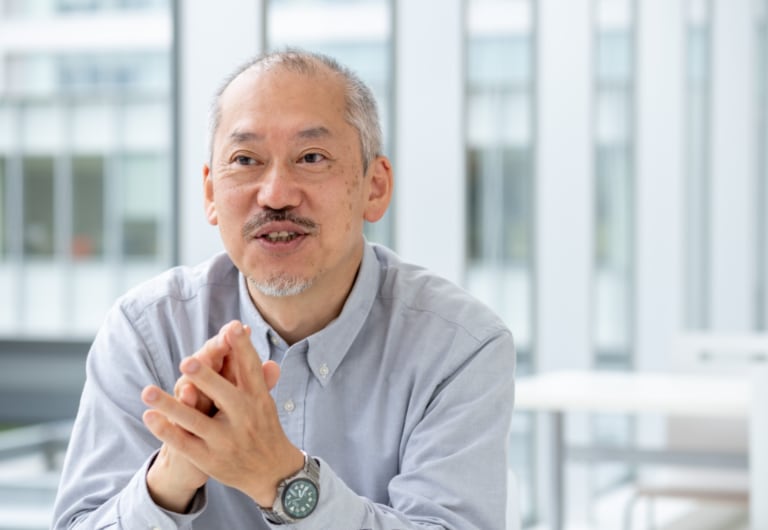
Sometime in his early 50s, Hiroshi underwent his first abdominal ultrasound examination, which was an optional procedure during an in-house physical examination. Following the procedure, he was diagnosed with suspected gallbladder stones. Hiroshi had always been partial to fatty foods like ramen, and he had high blood lipid and cholesterol levels. On the other hand, he said, "I don't smoke, and I usually drink very little alcohol. I had skipped the abdominal ultrasound examination as, up until then, I had never seen or felt any symptoms, so I assumed everything was fine." His decision to get an abdominal ultrasound examination was made casually on a whim as he figured he might as well give it a try since he was now in his 50s. The surprising results however, indicated a need for closer examination.
Avoiding surgery is an option, "But you face the risk of gallbladder inflammation"
Following a thorough examination, he was officially diagnosed with gallbladder stones. Not only that, but his gallbladder was so full of stones that it was practically immobile. Gallstones are generally associated with intense pain but in Hiroshi’s case, he did not feel any subjective symptoms at all. "Seeing as I had not felt anything at all, I was truly shocked to hear that my gallbladder was filled with stones," Hiroshi said. At the same time, his doctor informed him that his gall bladder wall had thickened and hardened, and that the gall bladder was not functioning at all. As such, the doctor recommended removing it altogether.
Needless to say, anyone would be averse to the idea of having any of their organs removed. Hiroshi discussed his options with his doctor: "Since I had not experienced any symptoms of a non-functioning gall bladder up to now, isn't there any alternative where I could simply avoid having it removed?" "That is an option," the doctor replied. "However, the risks of that include acute cholecystitis and peritonitis from rupture of the gall bladder." Upon hearing those words, Hiroshi decided to proceed with surgery to have his gallbladder removed.
What eased his anxiety before surgery?
As an in-house lecturer for basic medical courses, Hiroshi was fortunate to have some knowledge of laparoscopy. This, he says, helped him to stay positive about his decision to have surgery. He did have one concern though – the potential for unforeseen events that can occur during laparoscopic surgery, such as damage to the cystic artery. While the probability of this happening is generally low, such an occurrence would immediately result in the operation being switched to open surgery. Despite being an optimistic person in general, Hiroshi remembers that he couldn’t help but a little nervous on the day of surgery. However, as he was being pushed into the operating room, he caught a glimpse of the Olympus surgical endoscope, and at that moment felt immediately at ease. "When I saw the company logo, I felt strangely relieved," said Hiroshi.
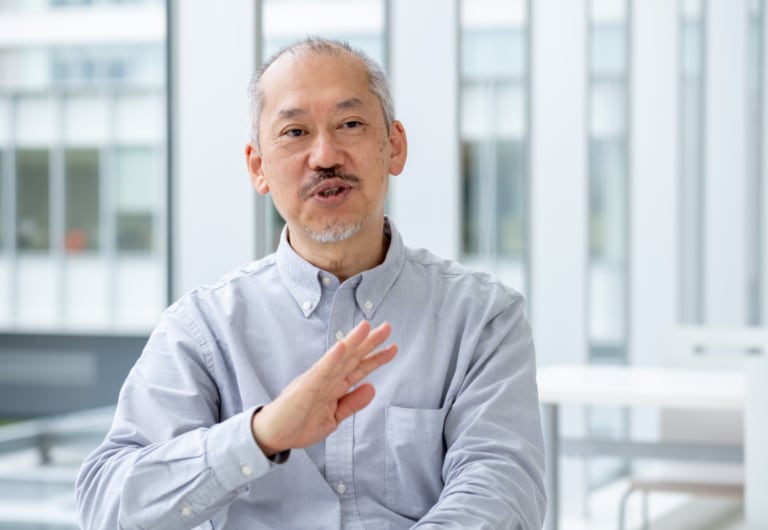
Supported by trust in endoscopic techniques and physicians
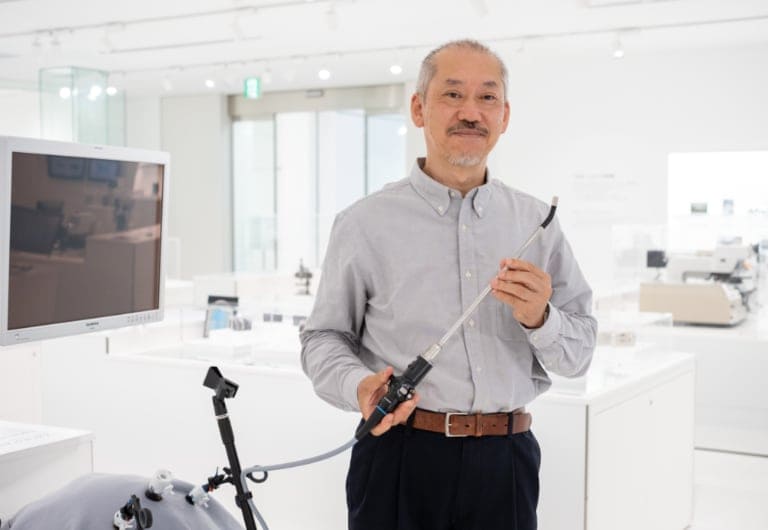
Olympus has rigorous Standard Operating Procedures (SOPs) in place that are necessary in developing and launching safe and reliable endoscope products. Not only do all product specifications and manufacturing procedures have to adhere to the SOPs, but also all of the information associated with quality and regulatory compliance. "Our development and manufacturing partners adhere strictly to these SOPs to produce endoscopes that are of the highest quality and safety," said Hiroshi, adding that he was also reassured as he knew that the doctor carrying out the surgery was skilled and experienced in endoscopic techniques. "I knew I was in good hands, and I would be fine."
The 4 nights and 5 days hospital stay was a small burden, both for himself and his family.
The surgery went off without a hitch. Initially there was some slight pain at the surgical wound site however this quickly turned into nothing more than a sore itch, before dissipating completely. In Hiroshi’s case, he had to undergo hospitalization for four nights and five days including his admission to the hospital the day before surgery. Within one day of surgery, he was able to get out of bed and walk around the hospital. He was discharged on the third day post-operation without any complications. As the day after his discharge was a Sunday, he spent some quiet quality time at home and by the fifth day post-operation, he was able to head to the office as usual. This was a significant as in comparison, open abdominal surgery requires about half a month of hospitalization and up to 3 weeks of bed rest at home following discharge. Hiroshi said the experience showcased the clear advantages of laparoscopic surgery over open abdominal surgery – it is much easier on the body and imposes smaller burdens in terms of hospitalization days and costs, family burden, and impact on company operations.
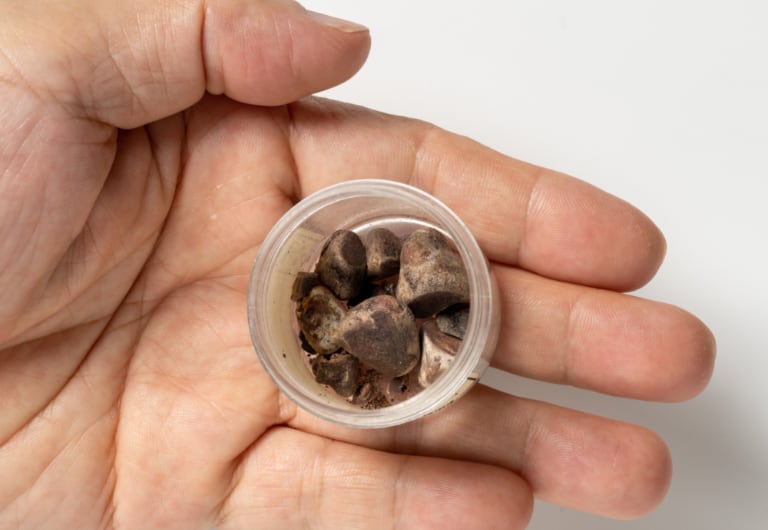
Hiroshi’s gallstones (they contained water immediately after removal and were about twice the size shown in this photo)
"I have understood the benefits of laparoscopic surgery for some time, but it was only through experiencing it personally did I realize how amazing it truly is," said Hiroshi.
"Even if I don't experience any subjective symptoms, I will continue to get regular checkups. In this age of 100-year lifespans, I really do hope to enjoy both my work and personal life with a healthy body," he said. Throughout the interview, as Hiroshi calmly recalled his personal experiences, his gentle tone of speech conveyed the strength and kindness that he has gained in overcoming adversity.
*1 What is lapacholotomy? Short for laparoscopic cholecystectomy, it refers to surgical removal of the gallbladder with the aid of a laparoscope.


